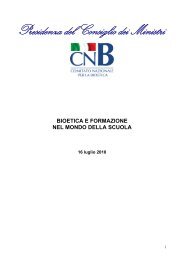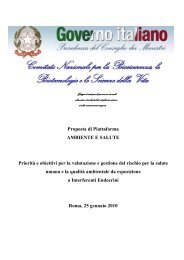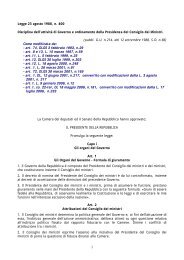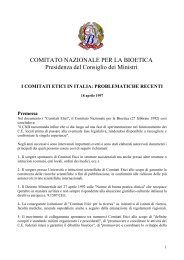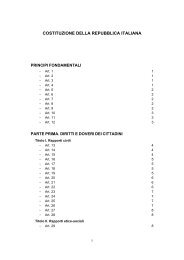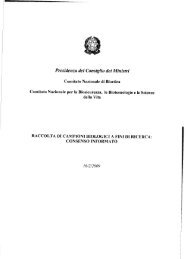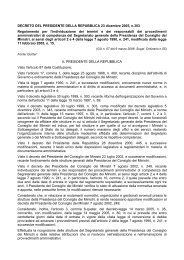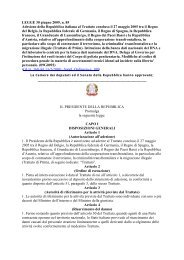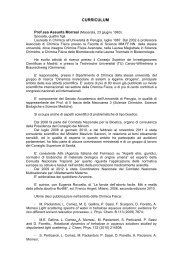President
President
President
You also want an ePaper? Increase the reach of your titles
YUMPU automatically turns print PDFs into web optimized ePapers that Google loves.
Let’s examine the following clinical condition: we cannot find a structured<br />
cerebral electrical activity; the production of the anti-diuretic hormone is absent<br />
(presence of diencephalic syndrome); awareness, consciousness and<br />
breathing are absent; all brainstem reflexes are absent; the endocranial<br />
hematic flow is totally absent; any metabolic activity is absent from the<br />
encephalus. When facing this situation, is it possible to believe that this is a<br />
body “without a head” and that therefore the individual is dead although some<br />
parts of his/her body can be kept – artificially – still functioning?<br />
The Committee believes that in this condition it is scientifically and<br />
ethically accurate to define the individual as “dead”. The presence of some<br />
cells or of other organs that are still vital – thanks to technology – in the current<br />
state of scientific knowledge is not sufficient to state that the passage from life<br />
to death has not happened for the individual.<br />
The Committee agrees with what, in interpreting the neurological criterion,<br />
derived from human physiopathology, supported by the clinical observation of<br />
the last few decades: namely, it believes that in the condition described the<br />
human being is “dead”. In fact, the endocranial damage, in its complex<br />
“pathogenic dynamic”, interrupted the coordination between its parts exercised<br />
by the central nervous system.<br />
However, if what some now call a “corpse with a beating heart” can benefit<br />
from mechanical ventilation which ensures an efficient gaseous exchange in<br />
the lungs and manifests a cardiac activity helped by the intrinsic contractility of<br />
the cardiac myocytes (supported pharmacologically), there still is (for a certain<br />
amount of time) a connection between the various organs due to circulation,<br />
which provides for their metabolic needs through the many active substances<br />
exchanged through blood circulation. No-one – in this physio-pathological<br />
interpretation – denies the existence of a connection between the parts, or the<br />
general action exercised on the organism by other specific systems (like the<br />
immunitary system, the hormonal system, ect.), which act through the vascular<br />
connection.<br />
In addition, it must be stressed that, clinically, the use of the neurological<br />
criterion to declare the death of the biological human being must be carried out<br />
very rigorously, without being affected by other purposes, even if they are<br />
understandable and respectable. To be specific, the state of so-called “whole<br />
brain death” (better, “encephalic death”) can be recognised from a number of<br />
signs:<br />
- irreversible loss of the capability of awareness and therefore of<br />
consciousness (receptiveness and response to stimuli and signals from the<br />
surrounding environment);<br />
- contextual loss of the ability to breath unaided;<br />
- flat line EEG for a period considered clinically adequate;<br />
- absence of brainstem reflexes;<br />
- certain knowledge of the cause of the destruction of the encephalus.<br />
It is indispensable, in reading the “signs”, to take into account a series of<br />
variables: the circumstances of the state of coma (toxic coma, coma due to<br />
primitive profound hypothermia, coma due to a serious endocranial<br />
insufficiency or other metabolic pathologies); the difficulties arising in<br />
ascertaining the death of young children. When however the abovementioned<br />
signs can be observed “thoroughly”, for a sufficient amount of time, encephalic<br />
death is certain: encephalic death does not “lead” to death but “is” the death of<br />
the individual, because the self-regulated functional unity that is typical of the<br />
170




